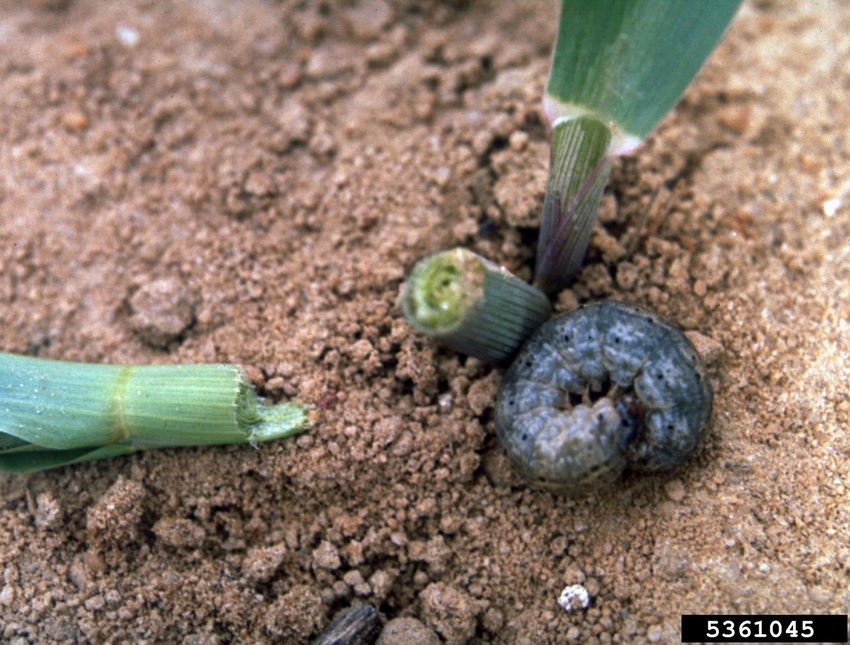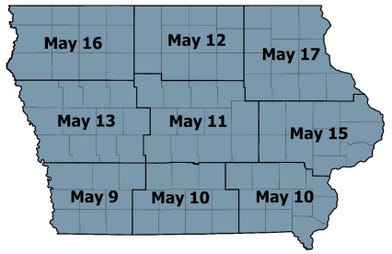May 9, 2023

Source: Iowa State University
Black cutworm (BCW) is a migratory pest that arrives in Iowa with spring storms each year. Black cutworm moths lay eggs in and near crop fields, and larvae can feed on leaves or cut corn seedlings.
Larvae must attain a certain size (4th instar) to be large enough to cut corn plants, and cutting can occur until plants reach the V5 stage. Black cutworm is sporadic and unpredictable, making it essential to scout to determine whether BCW larvae are present in a field and if management is required. Because BCW is sporadic, it is usually not economical to use preventative insecticide applications; however, rescue treatments can be very effective if scouting reveals larvae.
Although late-April 2023 was cool, it has been warm enough that black cutworm is likely developing more quickly this year than previous years.
In a typical year, early planted corn grows quickly enough in the spring to escape black cutworm feeding. However, cool and wet conditions in mid-April kept planters out of the field until recently, and any corn already planted grew slowly.
This, combined with accelerated development of black cutworm, may result in the “perfect storm” for BCW injury: seedling corn (less than V5) in the field and BCW larvae large enough to cut corn plants.
Use the predicted cutting dates in this article as a guide to begin scouting fields before the cutting date predicted in your area. Fields with cover crops or other green tissue (i.e., weeds) this spring should be prioritized since they serve as egg-laying sites for migrating moths.
Predicting cutting dates
We can predict when BCW will reach the 4th instar based on accumulating degree days and the occurrence of significant flights. A significant flight is defined as the capture of eight or more BCW moths over a two-night period in a pheromone trap. Larvae reach the 4th instar after 300 GDD have accumulated since a significant flight.
The Iowa Moth Trapping Network enlists the help of volunteers around the state to monitor BCW activity annually. Counties that have reported significant flights include Hancock (April 10), Taylor (April 11, April 15, and April 20), Mahaska (April 12), Buena Vista (April 19), Floyd (April 21), and Keokuk (April 24).
Figure 1 shows the predicted cutting dates for BCW in each crop reporting district. These cutting dates are estimated by combining actual, historical, and forecasted degree day data. BCW trapping will continue throughout May, and any additional significant flights that occur will be included in our weekly ICM Blog updates. Additional significant flights in an area may represent prolonged feeding of BCW larvae, so continue to scout until corn reaches V5.

Estimated black cutworm cutting dates for each Iowa crop reporting district based on initial significant flights in 2023, as of May 5. These are estimates of when cutting will begin, but additional large flights may result in prolonged feeding by black cutworm larvae.
Capturing BCW moths in a pheromone trap does not necessarily mean economic infestations will occur in a particular location. Scouting fields is the only way to determine if BCW are present and whether management is warranted. Combine scouting for BCW with early season stand assessments. Missing or cut plants are signs of black cutworm feeding but dig in the soil near affected plants to confirm larvae are present. Other early season pests (grubs, seed corn maggot, wireworms) may also be present.
You May Also Like




